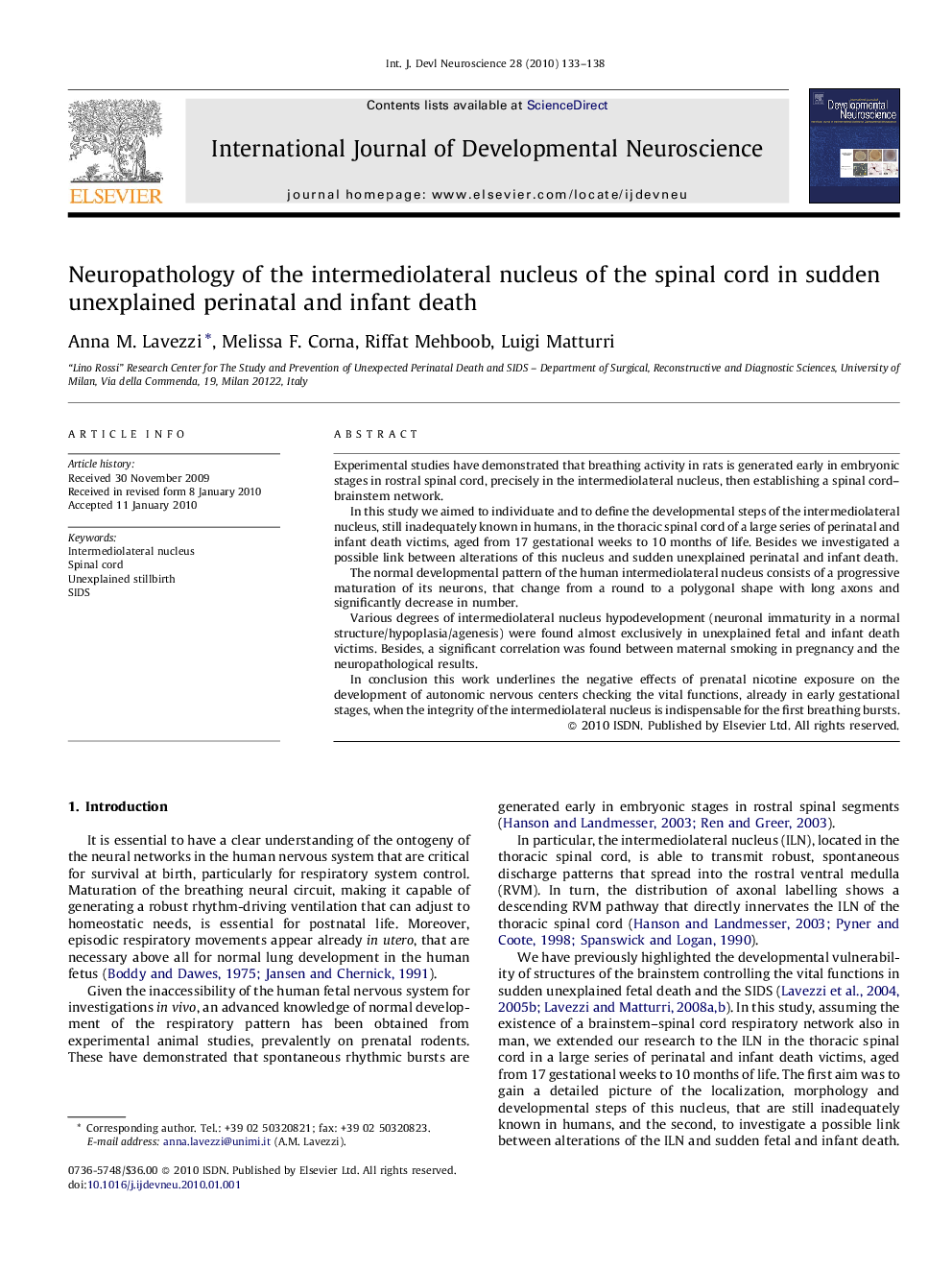| Article ID | Journal | Published Year | Pages | File Type |
|---|---|---|---|---|
| 2786761 | International Journal of Developmental Neuroscience | 2010 | 6 Pages |
Experimental studies have demonstrated that breathing activity in rats is generated early in embryonic stages in rostral spinal cord, precisely in the intermediolateral nucleus, then establishing a spinal cord–brainstem network.In this study we aimed to individuate and to define the developmental steps of the intermediolateral nucleus, still inadequately known in humans, in the thoracic spinal cord of a large series of perinatal and infant death victims, aged from 17 gestational weeks to 10 months of life. Besides we investigated a possible link between alterations of this nucleus and sudden unexplained perinatal and infant death.The normal developmental pattern of the human intermediolateral nucleus consists of a progressive maturation of its neurons, that change from a round to a polygonal shape with long axons and significantly decrease in number.Various degrees of intermediolateral nucleus hypodevelopment (neuronal immaturity in a normal structure/hypoplasia/agenesis) were found almost exclusively in unexplained fetal and infant death victims. Besides, a significant correlation was found between maternal smoking in pregnancy and the neuropathological results.In conclusion this work underlines the negative effects of prenatal nicotine exposure on the development of autonomic nervous centers checking the vital functions, already in early gestational stages, when the integrity of the intermediolateral nucleus is indispensable for the first breathing bursts.
